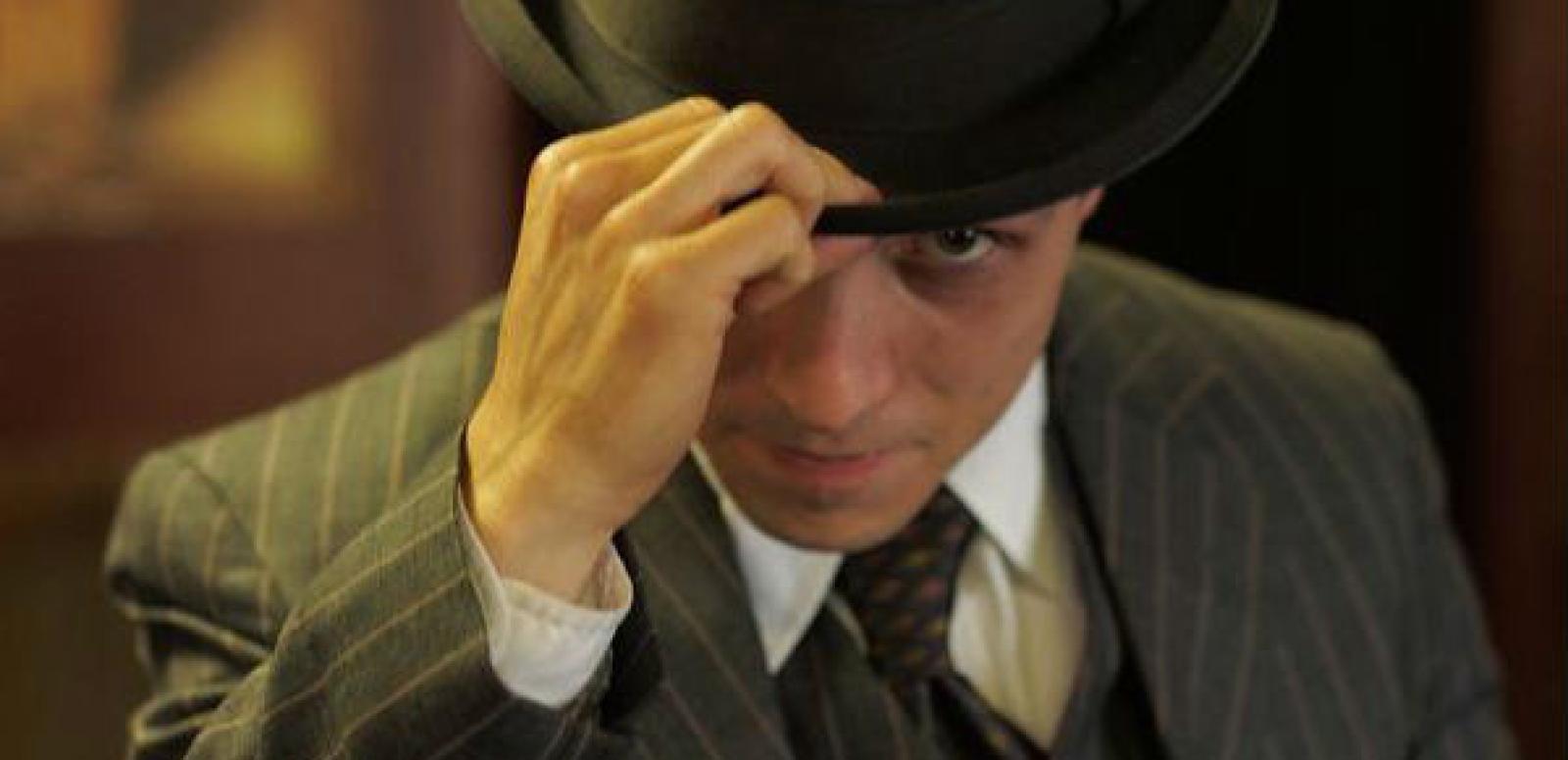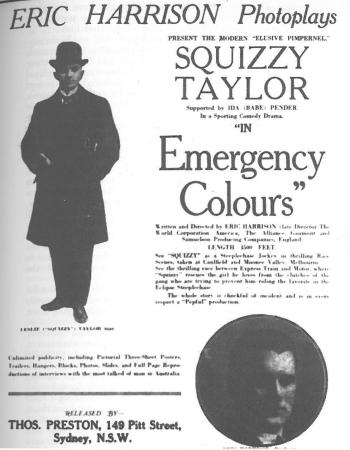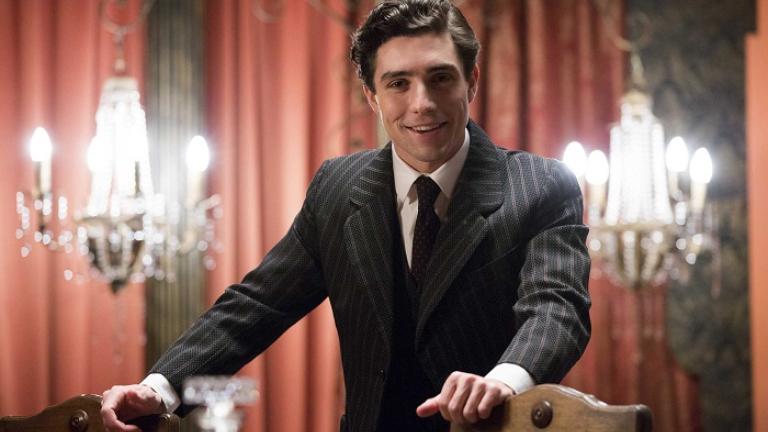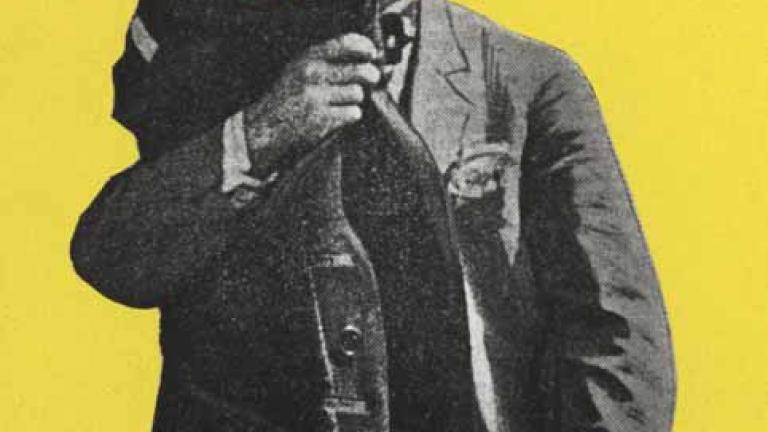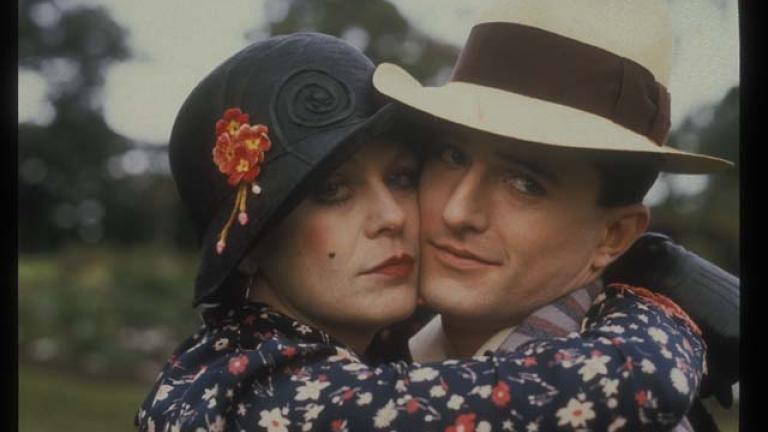A Melbourne underworld figure and subject of Underbelly: Squizzy (2013) was a 1920s film star in their own right, starring in the banned feature In Emergency Colours.
So how did it happen?
In the early 1920s, Melbourne society was a seething hotbed of entrepreneurial con artists and ambitious personalities, self-made gangsters and amateur film directors. Near the peak of Squizzy Taylor’s notoriety, one such producer-director by the name of Eric Harrison met with Taylor and his then girlfriend Ida ‘Babe’ Pender. He convinced the pair to star in a ‘sporting comedy drama’. At a reported 4500 feet, the final film would have screened at just under an hour, with many of its scenes set at Caulfield and Moonee Valley, in inner-city Melbourne.

